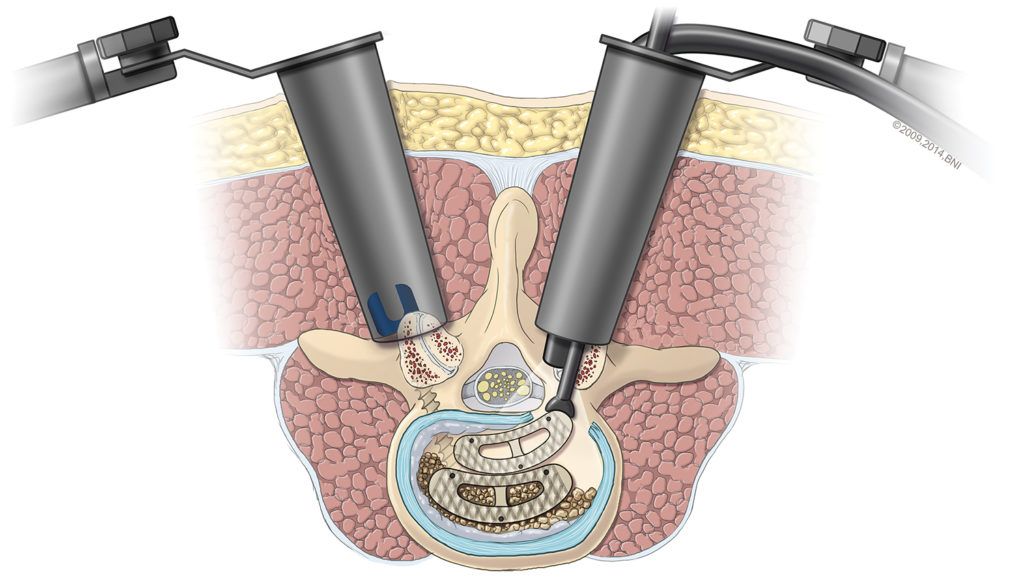
TLIF Surgery
What is TLIF surgery?
TLIF surgery, or transforaminal lumbar interbody fusion, is an approach to spinal fusion surgery in which the neurosurgeon accesses the lower spine through the intervertebral foramen. The intervertebral foramen is the opening between the bones of the spine, called vertebrae, through which nerves leave the spinal cord and en route to other parts of the body.
TLIF is one of several different approaches to spinal fusion surgery. Spinal fusion is performed to join together two or more spinal vertebrae, eliminating movement between them. This is done by removing the intervertebral disc between the two vertebrae, which normally enables the spine to bend and rotate, and inserting a bone graft in its place. The bone graft heals over several months, fusing the vertebrae together and stabilizing the spine.
TLIF takes advantage of a natural pathway in the spine and allows the neurosurgeon to fuse both the front and back of the spine through a single approach. It can be performed as an open surgery or a less invasive surgery.


What is transforaminal lumbar interbody fusion (TLIF) used for?
TLIF can be used to treat the following conditions of the lumbar spine:
- Degenerative disc disease
- Herniated disc
- Fractures to the vertebrae
- Spinal deformities, such as scoliosis or kyphosis
- Spinal weakness or instability, which may be caused by infections or tumors
- Spondylolisthesis, a condition in which on vertebra slips forward on top of another
Am I a good candidate for TLIF?
You may be a good candidate for spinal fusion if you have instability, weakness, or pain caused by one of the previously listed conditions and have already tried nonsurgical treatments. Spinal fusion changes the normal movement of the spine, which may accelerate wear and tear of the vertebral joints adjacent to the fused vertebrae.
If you do need spinal fusion, your neurosurgeon can help determine which approach is best for you.



